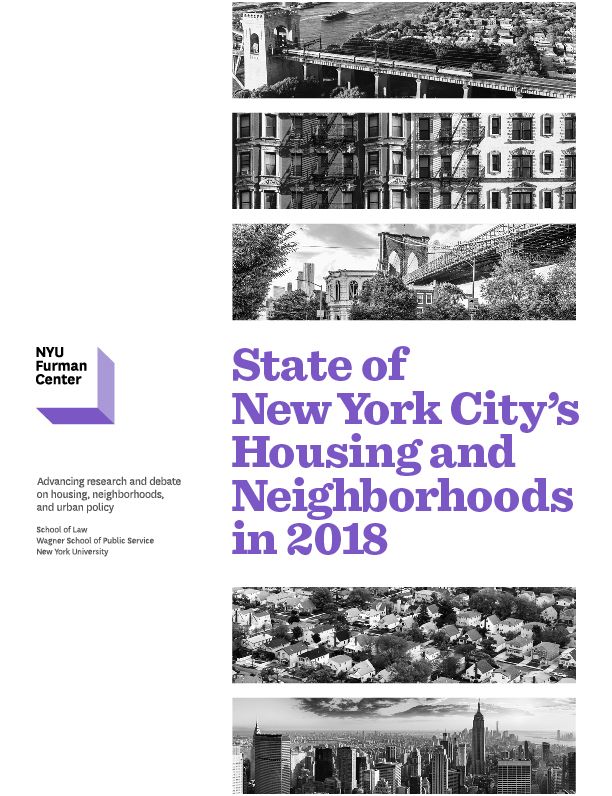
State of New York City’s Housing and Neighborhoods in 2018

Sponsor the most trusted comprehensive
|
The State of New York City’s Housing and Neighborhoods report, published annually by the NYU Furman Center, provides a compendium of data and analysis about New York City’s housing, land use, demographics, and quality of life for each borough and the city’s 59 community districts. Indicators are available for download on CoreData.nyc.
Each year, the State of New York City’s Housing and Neighborhoods report describes, contextualizes, and provides analysis on a pressing and policy-relevant issue affecting New York City. This year, the report focuses on changes in New York City’s housing stock. It describes the housing in the city today and how it has changed over time. It also examines factors that drive demand for housing, and indicators that measure whether supply is adequately moderating pressures on rents and housing prices that result from increases in demand.
READ THE REPORT: State of New York City’s Housing and Neighborhoods in 2018 (PDF) or The Diversity of New York City’s Neighborhoods and Schools (PDF)
ACCESS THE DATA: All information in the State of New York City’s Housing and Neighborhoods in 2018, plus expanded and historical data, is available for download on CoreData.nyc.
State of New York City’s Housing and Neighborhoods in 2018: Key Findings
- For the third year in a row, citywide real median renter household income rose faster than real median rent.
- Median rent across all housing types (subsidized, rent-stabilized, market rate) increased only $1 between 2016 and 2017, the smallest increase since 2005—2006.
- The median gross rent for recent movers jumped by $118 between 2016 and 2017, the largest increase since the American Community Survey began tracking in 2005.
- All five boroughs saw the college-educated share of their populations rise between 2007 and 2017, though the most dramatic increase occurred in North Brooklyn.
- Although the Bronx continued to lag behind the other boroughs in student math proficiency, student performance continued to rise in every borough.
- High school graduation rates continued to improve in all five boroughs, with over 72 percent of the high school class of 2018 graduating within four years.
- In 2017, a greater share of the population was in the labor force and a smaller share of the population was unemployed as compared to pre-recession levels.
- The overall poverty rate declined between 2010 and 2017 with a decrease in the childhood poverty rate and a slight increase in the poverty rate among seniors.
- Between 2000 and 2017, the distribution of household income became more skewed toward higher and lower incomes as the share of moderate- to middle-income households decreased.
- Homeownership in New York City remained stable in 2017, with less than a third of New York City households owning their homes.
- The number of foreclosure filings on one- to four-unit buildings and condominiums decreased in every borough except Manhattan between 2017 and 2018.
- While the share of renters in New York City remains far above the national average, the gap closed marginally between 2010 and 2017, with a slight fall at the city level and a somewhat larger rise at the national level.
READ THE REPORT: State of New York City’s Housing and Neighborhoods in 2018 (PDF) or The Diversity of New York City’s Neighborhoods and Schools (PDF)
ACCESS THE DATA: All information in the State of New York City’s Housing and Neighborhoods in 2018, plus expanded and historical data, is available for download on CoreData.nyc


